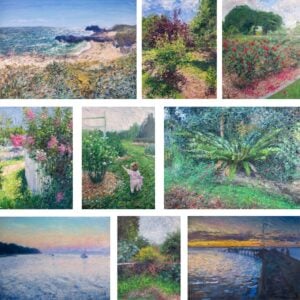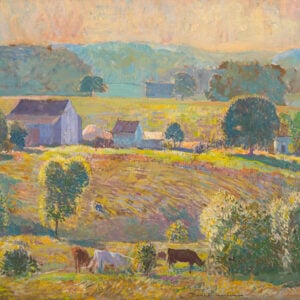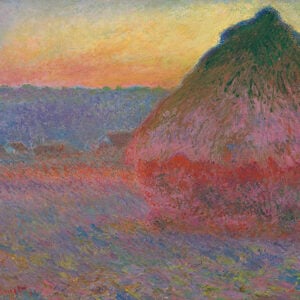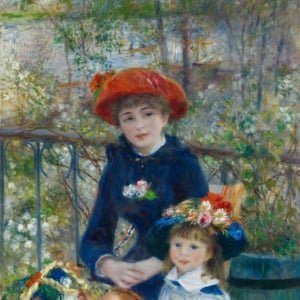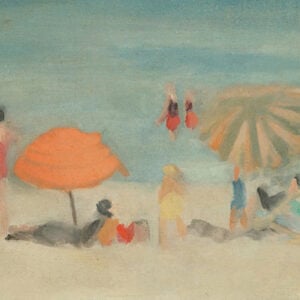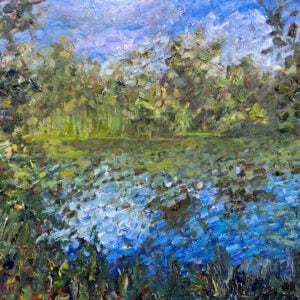(My “On the Easel” posts give you a behind-the-scenes look at what I am working on, what went well, what went wrong, and things I learn.)
Let’s take a look at how I painted Maryvale, Overcast. It’s a simple landscape with rich greens, dark trees, and a moody sky.

Reference Photo and Study
Here’s the reference photo I painted from:

Feel free to paint it yourself. Here’s a link to the full-size image.
Details
- Oil on Ampersand Gessoboard. 18×24 inches.
- Main colors: Ultramarine blue, cobalt blue, cadmium red, alizarin crimson, cadmium yellow, cadmium yellow light, viridian green, transparent brown oxide, and titanium white.
Refer to my supplies list for more details on what I use.
Notes
- I used a combination of brushes and palette knives, mostly palette knives. It’s an effective and underutilized pairing. Many artists seem to use either one or the other, but they complement each other well. You can use brushes for their dexterity and finesse and you can use palette knives for their clean, efficient, and bold strokes. The late Richard Schmid combined both tools effectively, especially in his flower paintings. He used brushes to lay down the foundation and palette knives to make crisp strokes of bright, clean color.
- The painting depicts an overcast day with subtle, muted colors. I would usually only use brushes for this, as their dexterity and control make them more suitable for subtle landscapes. But, I wanted to challenge myself by using palette knives. For this painting to work, I needed to wield the palette knives with a touch of finesse and dexterity, otherwise, the bold strokes might appear out of place and overpower the subject.
- I used brushes for the water, for some detailing on the large plant in the foreground, and for finishing touches to the landscape and sky. The visible brushwork played well into the idea of water and the tiny ripples and details.
- I took advantage of multicolored strokes to create the illusion of detail. This is an efficient way to paint. With a single stroke, I’m able to convey grass, rocks, plants, etc.
- The buildings at the top of the hill are a great example of simplification. Up close, they are nothing but vague color shapes. But they make enough sense in the context of the painting as a whole. The vague detailing also fits with the overall style of the painting. Had I painted the buildings with intricate detail, they would likely appear out of place and unusual.
- The two prominent trees act as dark accents. They anchor the painting and make the rest of the painting appear lighter by comparison.
- Notice how I created interest in the sky by using subtle color changes, texture, and directional strokes.
Progress Shots
I don’t have many progress shots for this painting as I painted fast and in a direct style. I started by rapidly mapping out the general colors and shapes. I then spent the rest of the session refining and adjusting so that all the parts worked together as a whole.

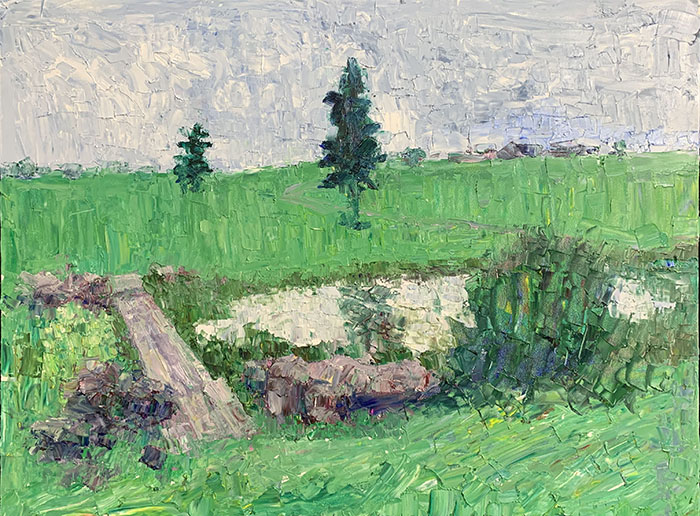
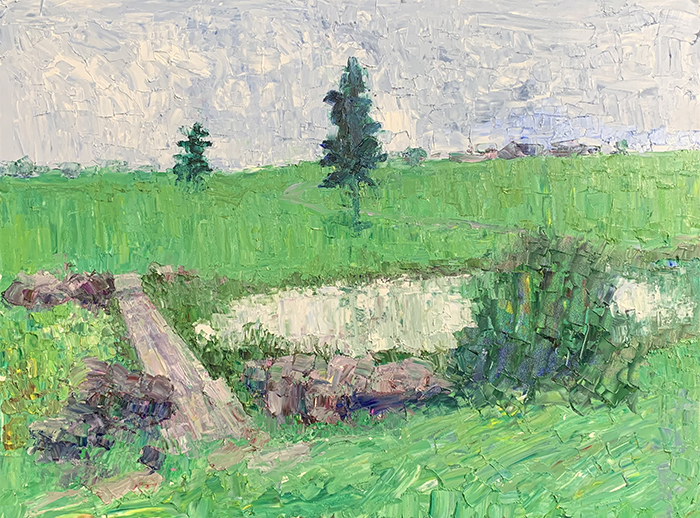


(Note: I use a different camera for photographing the finished painting than what I use for the progress shots. That explains the sudden change in colors at the end.)
Additional Resources
- Landscape Painting Resource Page
- More “On the Easel” Posts
- Supply List
- Painting With a Specific Objective – Features another Maryvale painting.
Thanks for Reading!
Thanks for taking the time to read this post. I appreciate it! Feel free to share with friends. If you want more painting tips, check out my Landscape Painting Masterclass. Enrollment is open for the next few days.
Happy painting!

Dan Scott
Draw Paint Academy

